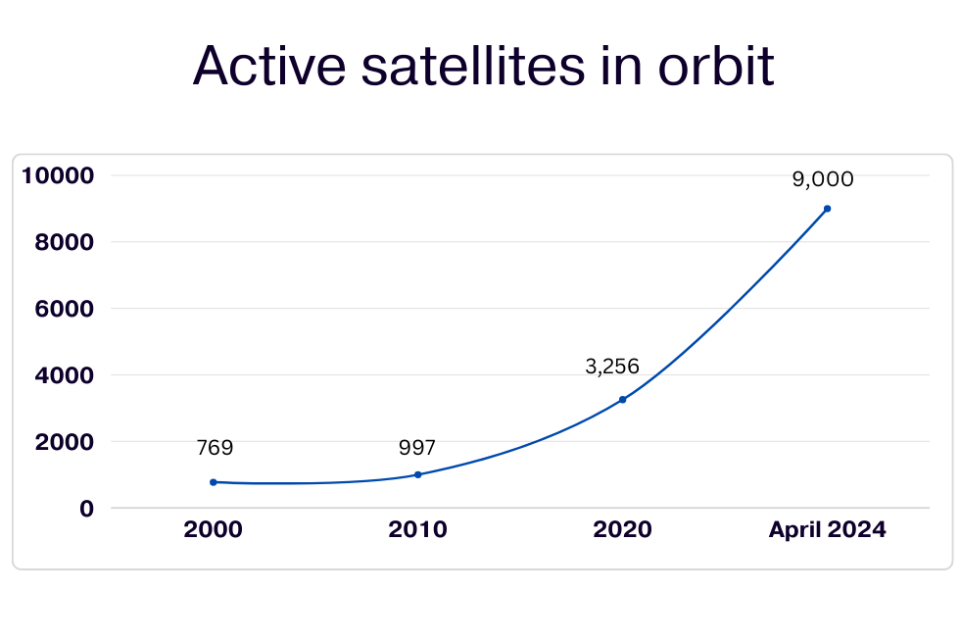The future space environment
As our planet becomes increasingly reliant on space, the UK is working to be at the forefront of space protection and sustainability.

Our use of space is rapidly evolving. The National Space Operations Centre (NSpOC) is preparing for the future now to ensure the UK is ready for the challenges and opportunities that await.
Powered by a global network of space sensors and a team of dedicated civilian and military analysts, we protect UK interests in space and on Earth, 365 days a year.
Why understanding the future of the space environment matters
The orbital landscape is changing rapidly. Launching spacecraft has become considerably more affordable (there has been a 95% cost reduction from around $65,000/kg to $1,500/kg for heavy launch to Lower Earth Orbit (LEO)).
Couple this with an ever-increasing reliance on satellite data and it’s easy to understand the boom in human-made objects being launched into our orbital environment. The number of active satellites in orbit, as of April 2024, reached over 9,000 and some reports suggest that by 2030, we could have more than 60,000 active satellites in space.

This graph shows the growth in the number of satellites in orbit since 2000. Data is from OECD The Economics of Space Sustainability 2022 and ESA Space Debris ‘by the numbers’.
Understanding the future of space is critical to planning our response to protect UK interests going forwards which is why we’re now developing our future sensor strategy and Space Domain Awareness (SDA) capability.
The four future scenarios
We commissioned InTandem and Raytheon to support us in developing a sensor and data strategy. As part of the strategy, four scenarios have been developed, using the GO-Science futures toolkit, to predict how the space environment might look over the next 10 years.
The Cosmic Bazaar
Growing private investment creates an environment where companies lead the charge, pursuing their own interests and projects independently pioneering their own projects without being tied to central government regulations. It’s a dynamic ecosystem where competition breeds innovation, leading to breakthroughs at every turn.
Corporate Cosmos
In this scenario, major corporations and private space agencies join forces to explore space together. It’s a unified approach where public and private sectors work hand-in-hand, propelling space exploration forward through collaboration and efficiency.
Nebular Nations
Here, governments take the reins, each pursuing their own space agenda independently. It’s a mosaic of different approaches and capabilities, with limited collaboration between nations. Space becomes a geopolitical playing field, with tensions on Earth translating to actions in orbit.
Global Space Directorate
Picture a world where governments unite to shape the future of space. It’s a coordinated effort where international alliances drive exploration and governance. Space isn’t fragmented; it’s a symphony of global collaboration.
We are working with our international partners to determine what the future of space should be.
The future of space
The future of space is filled with possibilities and by understanding these potential scenarios, NSpOC and its partners can better prepare for what lies ahead, ensuring that we continue to protect UK interests on Earth and in space for years to come.